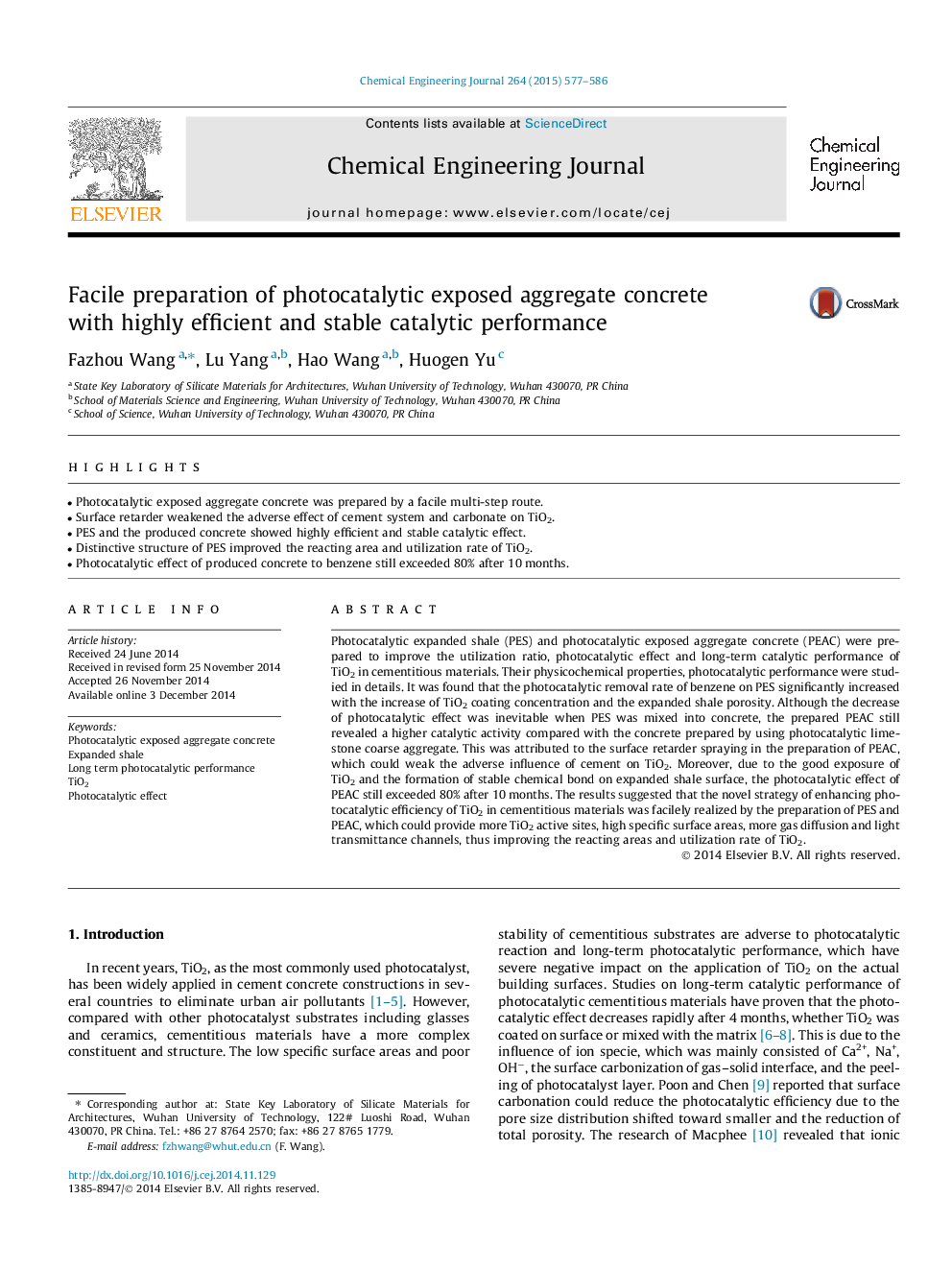| Article ID | Journal | Published Year | Pages | File Type |
|---|---|---|---|---|
| 146861 | Chemical Engineering Journal | 2015 | 10 Pages |
•Photocatalytic exposed aggregate concrete was prepared by a facile multi-step route.•Surface retarder weakened the adverse effect of cement system and carbonate on TiO2.•PES and the produced concrete showed highly efficient and stable catalytic effect.•Distinctive structure of PES improved the reacting area and utilization rate of TiO2.•Photocatalytic effect of produced concrete to benzene still exceeded 80% after 10 months.
Photocatalytic expanded shale (PES) and photocatalytic exposed aggregate concrete (PEAC) were prepared to improve the utilization ratio, photocatalytic effect and long-term catalytic performance of TiO2 in cementitious materials. Their physicochemical properties, photocatalytic performance were studied in details. It was found that the photocatalytic removal rate of benzene on PES significantly increased with the increase of TiO2 coating concentration and the expanded shale porosity. Although the decrease of photocatalytic effect was inevitable when PES was mixed into concrete, the prepared PEAC still revealed a higher catalytic activity compared with the concrete prepared by using photocatalytic limestone coarse aggregate. This was attributed to the surface retarder spraying in the preparation of PEAC, which could weak the adverse influence of cement on TiO2. Moreover, due to the good exposure of TiO2 and the formation of stable chemical bond on expanded shale surface, the photocatalytic effect of PEAC still exceeded 80% after 10 months. The results suggested that the novel strategy of enhancing photocatalytic efficiency of TiO2 in cementitious materials was facilely realized by the preparation of PES and PEAC, which could provide more TiO2 active sites, high specific surface areas, more gas diffusion and light transmittance channels, thus improving the reacting areas and utilization rate of TiO2.
